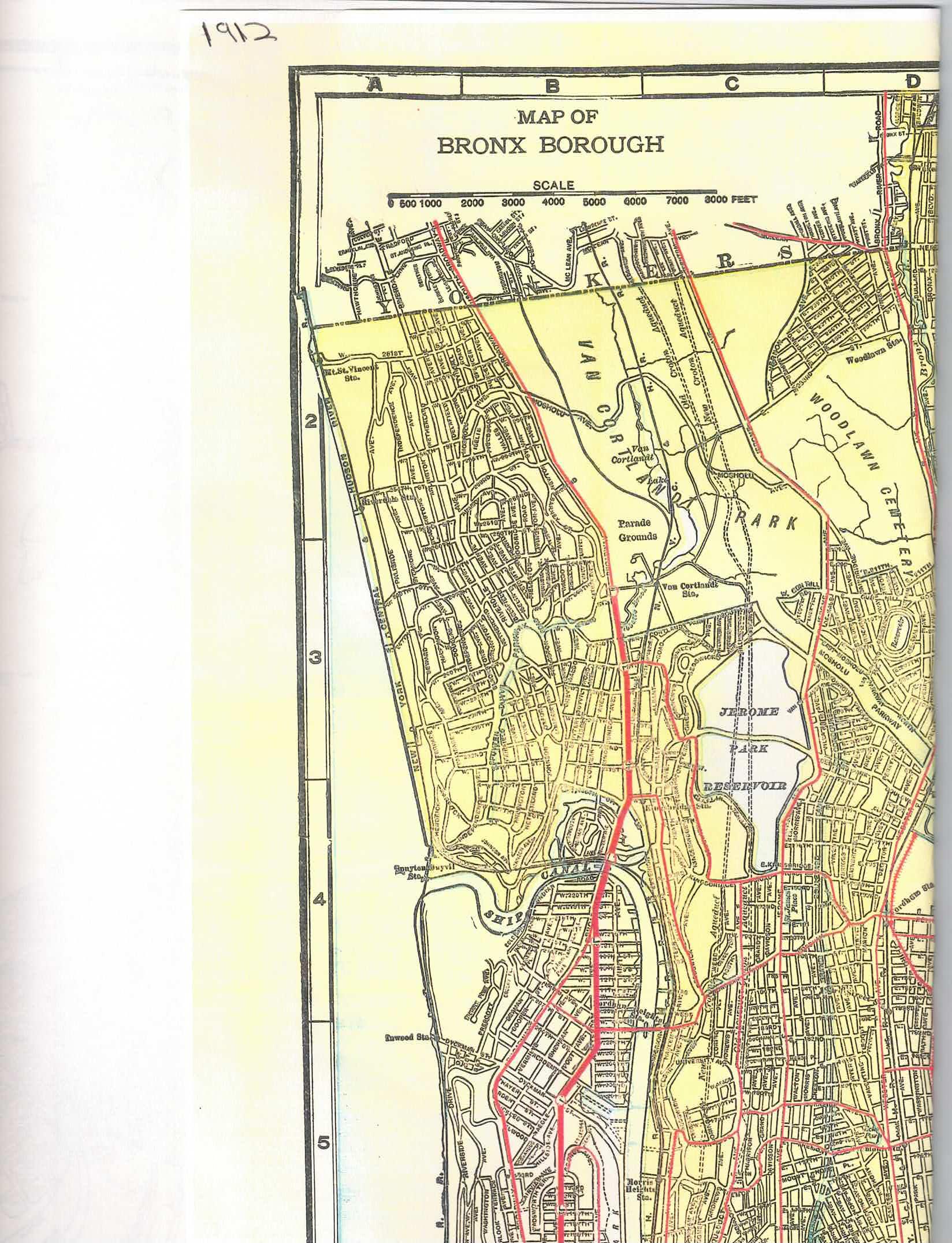Home › Forums › 20th Century › Spuyten Duyvil & Henry Hudson Parkways
- This topic has 1 reply, 2 voices, and was last updated 2 years, 9 months ago by
Thomas Casey.
-
AuthorPosts
-
-
July 2, 2021 at 5:43 am #2028
Building on our exchange of ideas about Fieldston, I’d like to extend the discussion about the Spuyten Duyvil Parkway and its transformation and partial relocation as the Henry Hudson Parkway. The attached 1912 map clearly shows the Spuyten Duyvil Parkway running north from 231st St. (and maybe from Kappock) to loop round the north side of the Fieldston School and perhaps to continue eastward to Van Cortlandt Park looping around the south side of Manhattan College on what’s now called the Manhattan College Parkway. As a linear park running along Stony Brook it dates back at least to 1888. I’m trying to locate Olmsted and Croes maps to see if they proposed this parkway around 1877 when they made a succession of Bronx planning proposals. On the Bronx, Olmsted’s main partner was the surveyor J.J.R. Croes, rather than Calvert Vaux.
When the Henry Hudson Parkway was routed and built in the 1930’s it apparently used the Spuyten Duyvil axis running northward to Riverdale Avenue, then crossing Riverdale Avenue and running parallel to Delafield Avenue till it reached 253rd St. It then ran between 253rd and 254th Streets to enter Van Cortlandt Park and meet the Saw Mill and Mosholu Parkways in the north central portion of the park.
The Henry Hudson Parkway was a more ambitious project that the Spuyten Duyvil Parkway: four lanes and a median, instead of two lanes, perhaps without a median; linking to Manhattan via the new Henry Hudson Bridge, and linking to the Saw Mill Parkway around the NYC-Yonkers boundary. But why wasn’t it routed along the Spuyten Duyvil Parkway axis north of the Fieldston School and south of Manhattan College, and then

across Van Cortlandt Park to meet the Saw Mill and Mosholu Parkways? Would that route have been too narrow and/or too steep to meet 1930’s express highway standards? Was such a routing opposed by the School and/or the College and/or the Fieldston Community? How many houses had to be demolished or relocated to run the parkway along the western and northern sides of the Fieldston Neighborhood parallel to Delafield and 253rd Streets? Was there significant opposition to the routing and construction of the Henry Hudson Parkway?
-
July 2, 2021 at 6:18 am #2029
Info from Wikipedia :In the 1870s, landscape architect Frederick Law Olmsted envisioned a greenbelt across the Bronx, consisting of parks and parkways that would align with existing geography. However, in 1877, the city declined to act upon his plan. Around the same time, New York Herald editor John Mullaly pushed for the creation of parks in New York City, particularly lauding the Van Cortlandt and Pell families’ properties in the western and eastern Bronx respectively. He formed the New York Park Association in November 1881. There were objections to the system, which would apparently be too far from Manhattan, in addition to precluding development on the parks’ sites. However, newspapers and prominent lobbyists, who supported such a park system, were able to petition the bill into the New York State Senate, and later, the New York State Assembly (the legislature’s lower house). It appears the parkways out of Manhattan and in the Parks of the Bronx have there design based on Olmsted’s work. I am sure there were some issues with condemnation of private & public property. The public opposition came from the building of the The Henry Hudson Bridge. After that, the Henry Hudson Parkway & Mosholu Parkway connecting to the Saw Mill had much less controversy. The Major Deegan caused a “Major” split in Van Cortlandt Park getting traffic out from the Triborough Bridge and too the George Washington. Like the Cross Bronx Expressway, most wished they were tunneled through the Bronx, at least through the Park.
-
-
AuthorPosts
- You must be logged in to reply to this topic.